- Choosing the Right Garlic Variety
- 1. Hardneck vs Softneck Garlic
- 2. Climate and Growing Conditions
- 3. Flavor and Culinary Use
- 4. Storage Life
- 5. Disease Resistance
- Preparing the Soil for Garlic
- Here are some steps for preparing the soil for garlic:
- Planting Garlic Cloves
- 1. Prepare the soil
- 2. Choose the right cloves
- 3. Break apart the bulbs
- 4. Plant the cloves
- 5. Mulch the area
- 6. Water regularly
- 7. Harvesting
- Caring for Garlic Plants
- Planting
- Watering
- Fertilizing
- Weeding
- Harvesting
- Harvesting Garlic Bulbs
- Timing
- Preparing for Harvest
- Harvesting Methods
- Storage
- Drying and Storing Garlic
- 1. Harvesting Garlic
- 2. Curing Garlic
- 3. Cleaning and Trimming
- 4. Storing Garlic
- 5. Freezing Garlic
- Benefits of Growing Garlic
- 1. Health Benefits
- 2. Pest Control
- 3. Soil Improvement
- 4. Culinary Uses
- 5. Cost-effective
- Tips for Using Garlic in Cooking
- 1. Buying and storing garlic:
- 2. Preparing garlic cloves:
- 3. Cooking with garlic:
- 4. Pairing garlic with other ingredients:
- “Question-Answer”
- When is the best time to plant garlic?
- What are some popular varieties of garlic to grow in a vegetable garden?
- How do I store harvested garlic?
- Can I use garlic scapes for cooking?
- Is it possible to grow garlic indoors?
- “Video” How to plant garlic
Garlic is a versatile and flavorful vegetable that can be grown in your own backyard. Whether you have a large garden or a small plot, garlic is an easy plant to grow and requires minimal maintenance. In addition to its culinary uses, garlic has also been used for centuries for its medicinal properties. This article will cover the basics of growing garlic, including planting, caring for, and harvesting garlic, as well as tips for storing and different varieties of garlic to try.
When it comes to growing garlic, the first step is to choose the right variety. There are two main types of garlic: hardneck and softneck. Hardneck garlic varieties are known for their large, easy-to-peel cloves and strong flavor, while softneck garlic varieties have smaller cloves and a milder taste. Some popular hardneck garlic varieties include Rocambole, Porcelain, and Purple Stripe, while popular softneck varieties include Artichoke and Silverskin.
Once you have chosen your garlic variety, it’s time to plant. Garlic should be planted in the fall, about 4 to 6 weeks before the first frost. Choose a sunny spot in your garden with well-drained soil. Break apart the garlic bulbs into individual cloves, being careful not to damage them. Plant each clove about 2 inches deep, with the pointed end facing up. Space the cloves about 6 inches apart and cover with soil. Mulching the garlic bed with straw or leaves can help protect the plants during the winter.
After planting, caring for garlic is relatively simple. Water the plants regularly, keeping the soil moist but not waterlogged. Remove any weeds that may compete for nutrients and space. Garlic does not require much fertilizer, but a light application of compost or organic fertilizer in the early spring can help promote healthy growth. Scapes, the curly stems that emerge from hardneck garlic plants in the spring, should be cut off to encourage bulb development. Harvesting garlic typically occurs in early to mid-summer, when the foliage begins to yellow and die back. Carefully dig up the bulbs, being careful not to damage them, and allow them to dry in a cool, well-ventilated area for a few weeks before storing.
Proper storage is essential for preserving the flavor of garlic. Garlic should be stored in a cool, dry place with good air circulation, such as a pantry or cellar. Avoid storing garlic in the refrigerator, as the cold temperature can cause the bulbs to sprout prematurely. Garlic can be stored in mesh bags or in a hanging braided form. It’s important to regularly check stored garlic for any signs of mold or decay and remove any affected bulbs to prevent the spread.
Overall, growing garlic in the vegetable garden is a rewarding experience. Not only does it provide a fresh and flavorful addition to your meals, but it also offers a wealth of health benefits. With a little bit of planning and care, you can enjoy homegrown garlic year-round.
Choosing the Right Garlic Variety
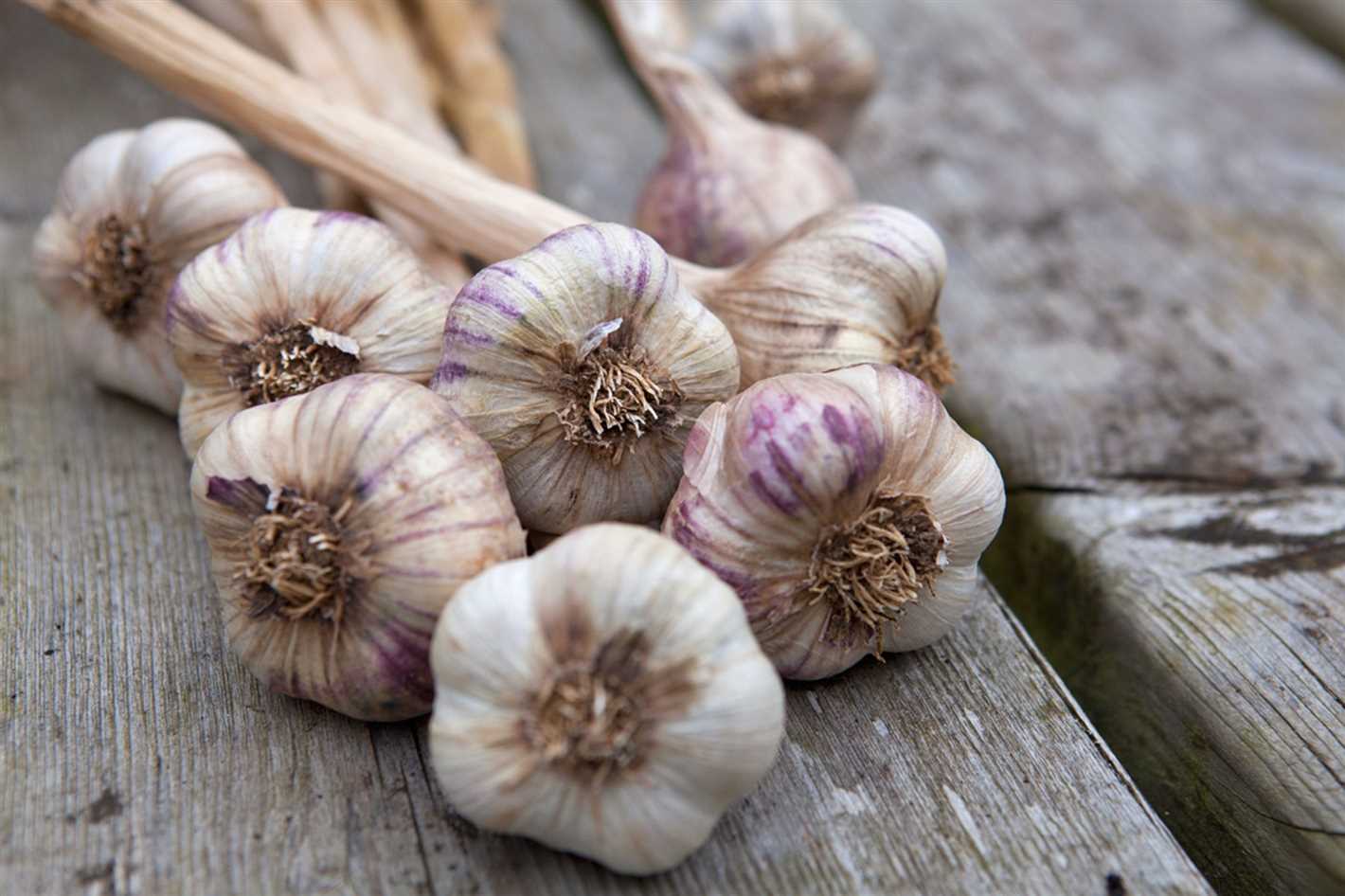
Garlic is a versatile and flavorful vegetable that is used in many cuisines around the world. When choosing the right garlic variety to plant in your vegetable garden, there are a few factors to consider.
1. Hardneck vs Softneck Garlic
There are two main types of garlic: hardneck and softneck. Hardneck garlic varieties are known for their large cloves and strong, robust flavors. They also produce a rigid, central stem called a scape, which can be harvested and used in cooking. Softneck garlic varieties, on the other hand, have smaller cloves and a milder flavor. They are typically easier to braid and have a longer storage life.
2. Climate and Growing Conditions
Another important factor to consider is the climate and growing conditions in your area. Garlic is generally a cool-season crop and requires a period of cold weather to develop properly. Hardneck garlic varieties are better suited to colder climates, while softneck varieties can tolerate milder winters. Additionally, some garlic varieties are better adapted to specific soil types, so it’s important to choose a variety that will thrive in your garden’s conditions.
3. Flavor and Culinary Use
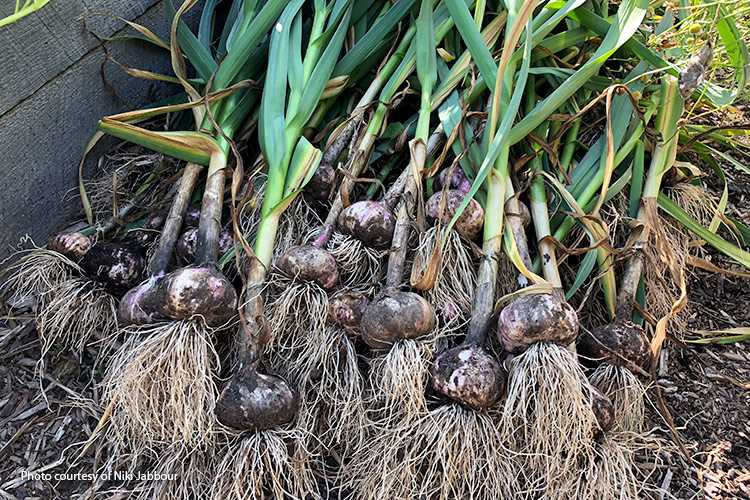
The flavor of garlic can vary greatly between different varieties, ranging from mild and subtle to pungent and spicy. Consider the flavor profiles that you prefer in your cooking and choose a garlic variety that aligns with your taste preferences. Some garlic varieties are also better suited to specific culinary uses, such as roasting or sautéing, so it’s worth exploring the different varieties available to find one that suits your cooking style.
4. Storage Life
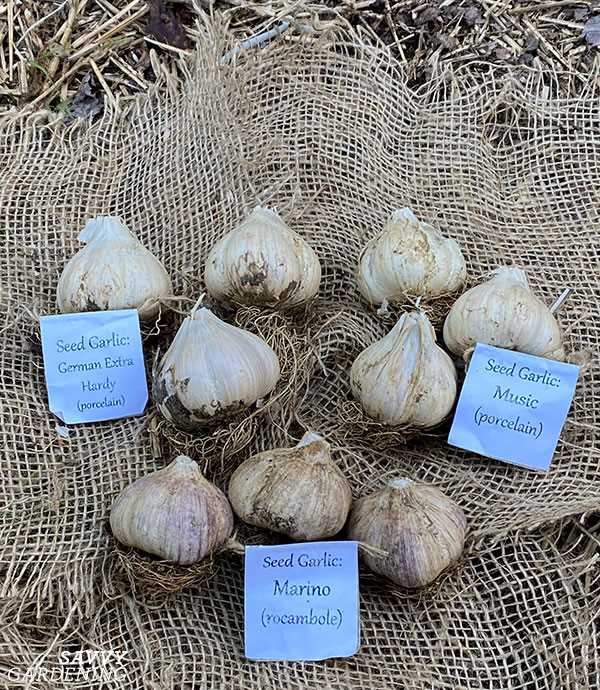
If you plan to store your harvested garlic, it’s important to choose a variety with a good storage life. Softneck garlic typically has a longer storage life than hardneck garlic due to its tighter cloves and protective outer layers. However, there are some hardneck varieties that store well if properly cured and stored in a cool, dry place.
5. Disease Resistance
Some garlic varieties have better resistance to common diseases and pests that can affect garlic plants, such as white rot or garlic nematodes. If these issues have been a problem in your garden in the past, it may be beneficial to choose a garlic variety with higher disease resistance to ensure a successful harvest.
In conclusion, choosing the right garlic variety for your vegetable garden involves considering factors such as hardneck vs softneck garlic, climate and growing conditions, flavor and culinary use, storage life, and disease resistance. By taking these factors into account, you can select a garlic variety that will thrive in your garden and provide you with delicious, homegrown garlic for your culinary creations.
Preparing the Soil for Garlic
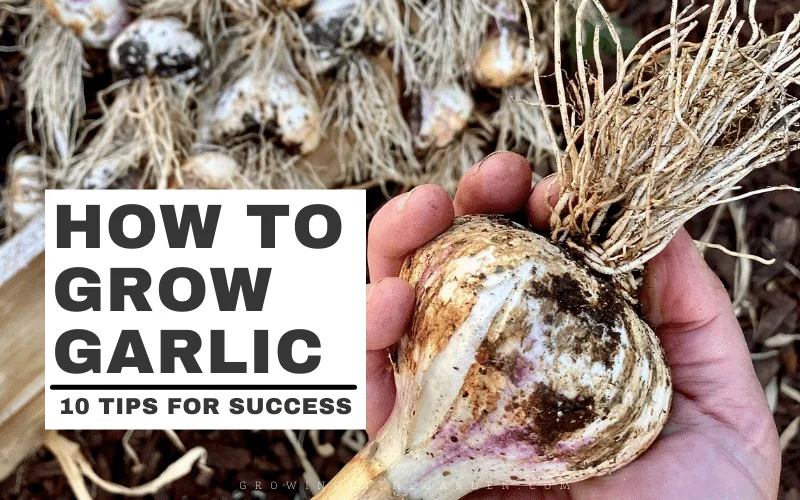
Garlic is a hardy plant that grows best in well-drained soil with a pH level between 6.0 and 7.0. Preparing the soil before planting garlic is crucial for the plant’s growth and development.
Here are some steps for preparing the soil for garlic:
- Choose the right location: Select a sunny spot in your vegetable garden that receives at least six hours of direct sunlight per day.
- Clear the area: Remove any weeds, rocks, and debris from the selected area. Garlic does not compete well with weeds for nutrients and sunlight, so it is important to start with a clean slate.
- Loosen the soil: Use a garden fork or a tiller to loosen the soil to a depth of at least 8 inches. This will help improve drainage and allow the garlic roots to penetrate the soil easily.
- Amend the soil: Garlic plants thrive in fertile soil rich in organic matter. Add compost, well-rotted manure, or aged leaf mold to the soil to improve its fertility and structure. Aim to incorporate about 2-4 inches of organic matter into the topsoil.
- Test the soil: It is a good idea to test the soil’s pH level and nutrient content before planting garlic. The ideal pH range for garlic is between 6.0 and 7.0. You can purchase a soil testing kit from a garden center or send a soil sample to a local agricultural extension office for analysis.
- Adjust the soil pH: If the soil pH is too low (acidic), add lime to raise the pH level. If the soil pH is too high (alkaline), add sulfur or peat moss to lower the pH level. Follow the recommendations provided by the soil testing results.
By following these steps, you will prepare the soil for planting garlic and provide an optimal growing environment for your garlic plants.
Planting Garlic Cloves
Planting garlic cloves is a straightforward process that can be done in a few simple steps. Here’s a step-by-step guide on how to plant garlic cloves:
1. Prepare the soil
Before planting garlic cloves, make sure to prepare the soil properly. Garlic prefers well-draining soil with a pH level between 6.0 and 7.0. Loosen the soil and remove any weeds or rocks.
2. Choose the right cloves
When selecting garlic cloves for planting, make sure to choose healthy, firm cloves. Avoid planting garlic cloves that are soft, moldy, or damaged.
3. Break apart the bulbs
Break apart the garlic bulbs into individual cloves. Make sure to keep the papery skin intact on each clove.
4. Plant the cloves
Plant the garlic cloves with the pointed end facing up and the flat end facing down. Plant the cloves about 2-3 inches deep and space them about 4-6 inches apart in rows.
5. Mulch the area
After planting the cloves, cover the area with a layer of organic mulch such as straw or leaves. Mulching helps to conserve moisture, suppress weed growth, and regulate soil temperature.
6. Water regularly
Keep the garlic cloves consistently moist, but not overly saturated. Watering once or twice a week should be sufficient, depending on the weather conditions.
7. Harvesting
Garlic cloves are usually ready to harvest when the leaves turn yellow and start to dry out. Carefully dig up the bulbs from the soil using a garden fork. Allow the harvested bulbs to dry in a cool, dry, and well-ventilated area for a few weeks before storing.
By following these steps, you can successfully plant garlic cloves and enjoy a bountiful harvest of fresh garlic. Remember to choose the right variety of garlic for your region and follow any specific planting instructions provided by the seed supplier.
Caring for Garlic Plants
Garlic plants are relatively low-maintenance and easy to care for. Here are some important steps to follow to ensure healthy growth and a bountiful harvest:
Planting
- Choose a sunny spot in your garden with well-drained soil.
- Prepare the soil by adding organic matter, such as compost or well-rotted manure.
- Break the garlic bulbs into individual cloves, leaving the papery skin intact.
- Plant the cloves about 2 inches deep and 6 inches apart, with the pointed end facing upwards.
Watering
- Water the soil thoroughly after planting to settle it around the cloves.
- Maintain consistently moist soil throughout the growing season, especially during dry periods.
- Avoid overwatering, as garlic plants are susceptible to rot in waterlogged soil.
Fertilizing
- Apply a slow-release organic fertilizer to the soil at planting time.
- Side-dress the plants with compost or well-rotted manure in early spring.
- Avoid high-nitrogen fertilizers, as they can promote excessive leaf growth and inhibit bulb formation.
Weeding
- Keep the area around the garlic plants free of weeds, as they can compete for nutrients and moisture.
- Use mulch, such as straw or leaves, to suppress weed growth and conserve soil moisture.
- Avoid using herbicides near garlic plants, as they can harm the plants.
Harvesting
- Garlic bulbs are ready for harvest when the tops begin to turn yellow and dry out.
- Carefully dig up the bulbs using a garden fork or shovel, being careful not to damage them.
- Allow the bulbs to dry in a well-ventilated, shaded area for 1-2 weeks.
- Once dry, remove any remaining soil and trim the roots and tops of the bulbs.
- Store the garlic bulbs in a cool, dry place with good air circulation to prolong their shelf life.
By following these care instructions, you can enjoy a successful garlic harvest and have a plentiful supply of this flavorful herb for your culinary creations.
Harvesting Garlic Bulbs
Harvesting garlic bulbs is an exciting time in the vegetable garden. Here are some tips to help you know when and how to harvest your garlic:
Timing
- Garlic is typically ready to harvest in late spring or early summer, depending on the variety and your local climate.
- Look for the garlic plants to have 5-6 green leaves remaining. This is a sign that the bulbs have reached maturity.
Preparing for Harvest
- A couple of weeks before you plan to harvest, stop watering your garlic plants. This will help the bulbs dry out and cure, making them easier to store.
- If you have mulched your garlic plants, remove the mulch a few days before harvesting. This will allow the soil to dry out and make it easier to dig up the bulbs.
Harvesting Methods

- Carefully dig up the garlic bulbs using a garden fork or shovel. Be careful not to damage the bulbs with the digging tool.
- Gently brush off any excess dirt from the bulbs. Do not wash the bulbs as this can increase the risk of mold during storage.
- Leave the garlic plants on the soil surface or hang them in a cool, dry, and well-ventilated area to cure for 2-3 weeks. This will further dry out the bulbs and improve their flavor and storage life.
Storage
Once your garlic bulbs have cured, it’s time to store them for future use:
- Trim the roots and remove any loose outer layers of skin from the bulbs. Leave the protective papery skin intact.
- Store the bulbs in a cool, dark, and well-ventilated place. A mesh bag or a braided garlic rope works well for storing garlic.
- Avoid storing garlic bulbs in the refrigerator, as it can cause the bulbs to become soft and lose their flavor.
- Check your stored garlic regularly and remove any bulbs that show signs of rot or mold.
Now you know how to harvest and store your garlic bulbs to enjoy their delicious flavor well into the future!
Drying and Storing Garlic
Properly drying and storing garlic is essential for preserving its flavor and quality. Here are some tips to help you ensure your garlic stays fresh.
1. Harvesting Garlic
- Harvest garlic when the leaves start to turn yellow and dry out, typically in late summer or early fall.
- Carefully dig up the bulbs using a garden fork or shovel, being careful not to damage them.
- Remove any excess soil, but avoid washing the bulbs.
2. Curing Garlic
- Allow the garlic bulbs to cure in a dry, well-ventilated area for 2-4 weeks.
- Hang the bulbs in bundles or lay them on a mesh or wire rack to ensure good air circulation.
- Avoid direct sunlight, as it can cause the garlic to become discolored or lose its flavor.
3. Cleaning and Trimming
- Gently brush off any remaining dirt or loose outer layers of skin from the cured garlic bulbs.
- Trim the roots and stems to about 1 inch long.
- Be careful not to remove too much of the protective outer skin.
4. Storing Garlic
- Store garlic bulbs in a cool, dark, and dry place, such as a pantry or cellar.
- Avoid storing garlic near onions or potatoes, as they can cause each other to spoil.
- Do not refrigerate garlic, as it can cause the cloves to become soft and lose their flavor over time.
5. Freezing Garlic
- If you have more garlic than you can use before it spoils, you can freeze it for later use.
- Peel and chop the garlic cloves, then place them in an airtight container or freezer bag.
- Store the garlic in the freezer for up to 12 months.
- Frozen garlic works best in cooked dishes rather than raw preparations.
By following these simple steps, you can enjoy the flavor of your homegrown garlic for months to come.
Benefits of Growing Garlic
Garlic is not only a versatile and flavorful ingredient in culinary dishes, but it also offers several benefits when grown in your vegetable garden:
1. Health Benefits
- Boosts Immunity: Garlic is known for its immune-boosting properties, as it contains compounds that stimulate the production of white blood cells.
- Antibacterial and Antiviral Properties: Garlic has natural antibacterial and antiviral properties that can help fight off common infections and diseases.
- Heart Health: Regular consumption of garlic has been linked to a reduced risk of heart disease, as it helps lower blood pressure and cholesterol levels.
- Anti-inflammatory Effects: The sulfur compounds in garlic have anti-inflammatory effects that can support overall health and reduce the risk of chronic diseases.
2. Pest Control
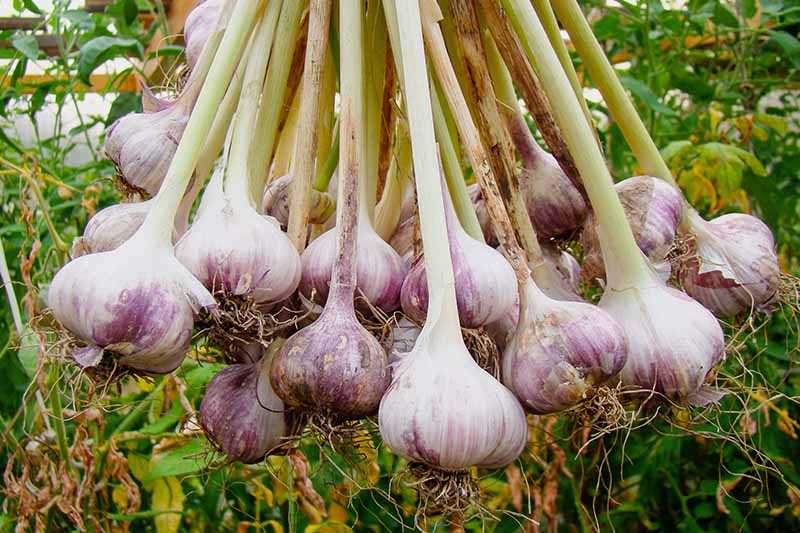
Garlic has natural pesticidal properties that can help repel pests from your garden. Planting garlic near other crops can deter pests such as aphids, slugs, and Japanese beetles.
3. Soil Improvement
- Natural Fertilizer: Garlic leaves and bulbs can be used as a natural fertilizer, enriching the soil with essential nutrients.
- Improves Soil Structure: Garlic plants help improve soil structure by loosening compacted soil, allowing better drainage and root development.
- Suppresses Weeds: The dense foliage of garlic plants helps suppress the growth of weeds, reducing the need for chemical herbicides.
4. Culinary Uses
Of course, one of the main benefits of growing garlic is being able to enjoy its delicious flavor and use it in a variety of culinary dishes. Whether it’s adding depth to sauces, enhancing the taste of roasted vegetables, or infusing oils for dressings, garlic is an essential ingredient in many cuisines.
5. Cost-effective
Growing your own garlic can be a cost-effective alternative to buying it from stores. Garlic bulbs are relatively low-cost to purchase and can yield a plentiful harvest, providing you with a steady supply throughout the year.
With its numerous health benefits, natural pest control properties, soil improvement qualities, culinary versatility, and cost-effectiveness, growing garlic in your vegetable garden is a decision that can reap many rewards.
Tips for Using Garlic in Cooking
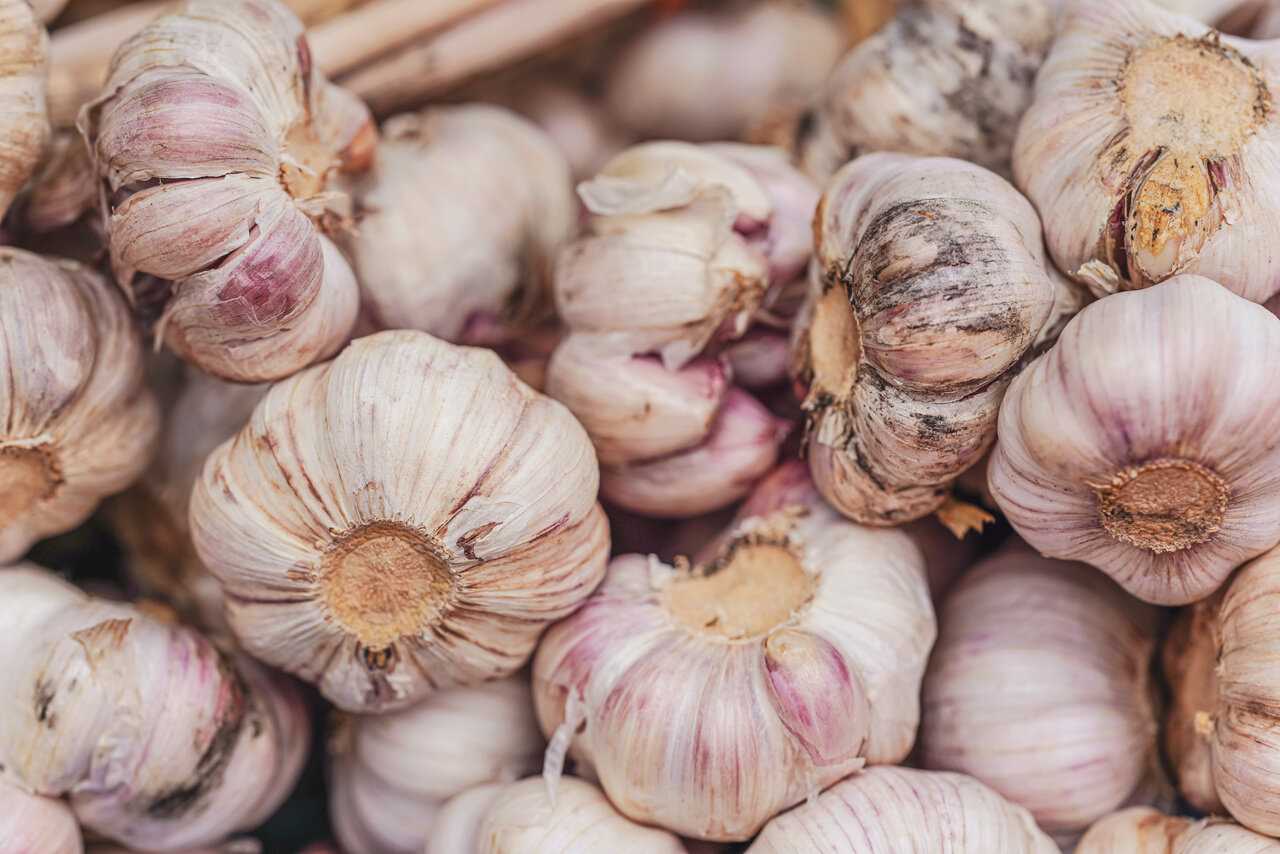
Garlic is a versatile ingredient that can add flavor and depth to a wide range of dishes. Here are some tips for using garlic in your cooking:
1. Buying and storing garlic:
- Choose firm bulbs with tight skins, avoiding any bulbs that have started to sprout or feel soft.
- Store garlic in a cool, dry place such as a pantry or cupboard. Avoid storing garlic in the refrigerator, as it can cause the cloves to become rubbery and lose their flavor.
- Keep garlic bulbs intact until you are ready to use them to ensure maximum freshness.
2. Preparing garlic cloves:
- To peel garlic cloves, place them on a cutting board and use the flat side of a chef’s knife to press down firmly on the clove. This will loosen the skin, making it easier to remove.
- After peeling, make sure to remove any green germ from the center of the clove, as it can be bitter.
- If a recipe calls for minced garlic, use a garlic press or finely chop the garlic cloves with a sharp knife.
3. Cooking with garlic:
- Garlic can be used in both raw and cooked dishes. When adding garlic to a dish, it is often best to cook it briefly in oil or butter to release its flavor.
- If you prefer a milder garlic flavor, you can roast the garlic bulbs whole. Simply cut off the top of the bulb to expose the cloves, drizzle with olive oil, and roast in an oven until soft and golden.
- When sautéing garlic, be careful not to burn it, as it can become bitter. Cook garlic over medium heat until it becomes fragrant and slightly golden.
4. Pairing garlic with other ingredients:
- Garlic pairs well with a variety of other flavors, including lemon, herbs such as parsley and thyme, and other vegetables like tomatoes and onions.
- Try adding minced garlic to salad dressings, marinades, soups, sauces, and stir-fries for an extra burst of flavor.
- Garlic can also be used to make garlic butter, which is delicious spread on bread or used as a topping for grilled meats and vegetables.
Experiment with different cooking techniques and flavor combinations to discover your favorite ways to use garlic in the kitchen. Whether you roast it, sauté it, or add it raw to a dish, garlic is sure to enhance the flavor of your meals.
“Question-Answer”
When is the best time to plant garlic?
The best time to plant garlic is in the fall, about 4 to 6 weeks before the ground freezes. This allows the cloves to establish roots before winter and helps promote healthy growth in the spring.
What are some popular varieties of garlic to grow in a vegetable garden?
Some popular varieties of garlic to grow in a vegetable garden are “Hardneck” and “Softneck” garlic. Hardneck varieties have a hard central stem and produce fewer but larger cloves, while Softneck varieties have a soft stem and produce more cloves, but they are usually smaller.
How do I store harvested garlic?
After harvesting garlic, it is important to cure it before storing. To cure garlic, hang the harvested bulbs in a well-ventilated area for about 2 weeks. Once the garlic is cured, trim off the roots and store it in a cool, dry place with good air circulation.
Can I use garlic scapes for cooking?
Yes, garlic scapes can be used in cooking. They have a milder flavor compared to garlic cloves and can be used in various dishes such as stir-fries, pesto, soups, and salads. Garlic scapes are usually harvested in early summer and can add a delicious twist to your culinary creations.
Is it possible to grow garlic indoors?
Yes, it is possible to grow garlic indoors. You can grow garlic in containers or pots, as long as they have good drainage. Place the containers in a sunny location and make sure to water them regularly. Indoor-grown garlic may not grow as large as outdoor-grown garlic, but it can still be a rewarding experience.







